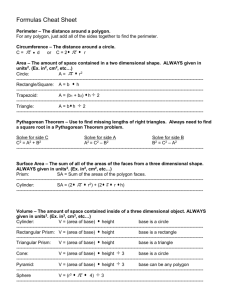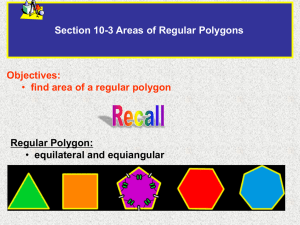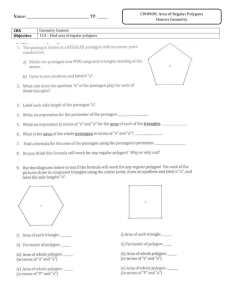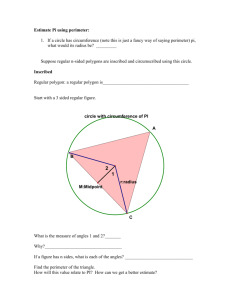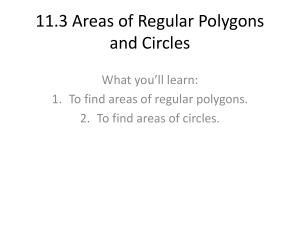Areas of Regular Polygons and Circles Answer Prompts
advertisement
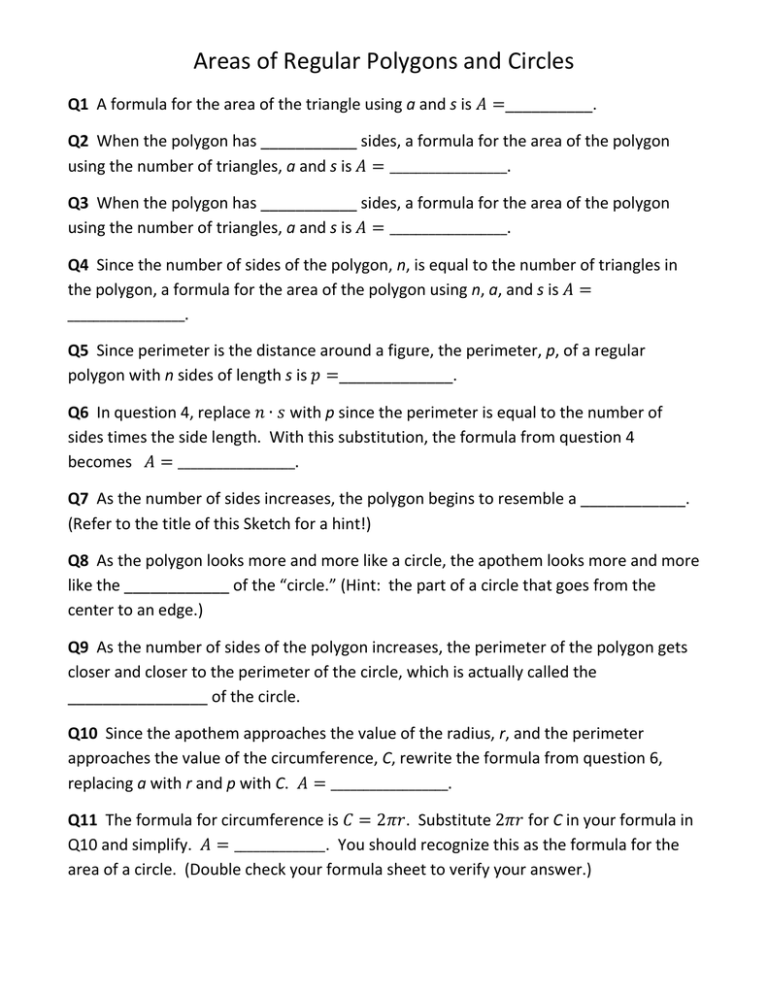
Areas of Regular Polygons and Circles Q1 A formula for the area of the triangle using a and s is 𝐴 =__________. Q2 When the polygon has ___________ sides, a formula for the area of the polygon using the number of triangles, a and s is 𝐴 = __________________. Q3 When the polygon has ___________ sides, a formula for the area of the polygon using the number of triangles, a and s is 𝐴 = __________________. Q4 Since the number of sides of the polygon, n, is equal to the number of triangles in the polygon, a formula for the area of the polygon using n, a, and s is 𝐴 = __________________. Q5 Since perimeter is the distance around a figure, the perimeter, p, of a regular polygon with n sides of length s is 𝑝 =_____________. Q6 In question 4, replace 𝑛 ∙ 𝑠 with p since the perimeter is equal to the number of sides times the side length. With this substitution, the formula from question 4 becomes 𝐴 = __________________. Q7 As the number of sides increases, the polygon begins to resemble a ____________. (Refer to the title of this Sketch for a hint!) Q8 As the polygon looks more and more like a circle, the apothem looks more and more like the ____________ of the “circle.” (Hint: the part of a circle that goes from the center to an edge.) Q9 As the number of sides of the polygon increases, the perimeter of the polygon gets closer and closer to the perimeter of the circle, which is actually called the ________________ of the circle. Q10 Since the apothem approaches the value of the radius, r, and the perimeter approaches the value of the circumference, C, rewrite the formula from question 6, replacing a with r and p with C. 𝐴 = __________________. Q11 The formula for circumference is 𝐶 = 2𝜋𝑟. Substitute 2𝜋𝑟 for C in your formula in Q10 and simplify. 𝐴 = ______________. You should recognize this as the formula for the area of a circle. (Double check your formula sheet to verify your answer.)
